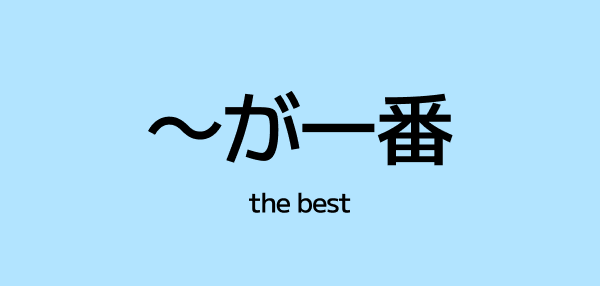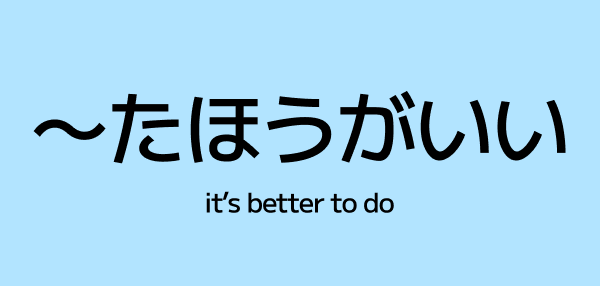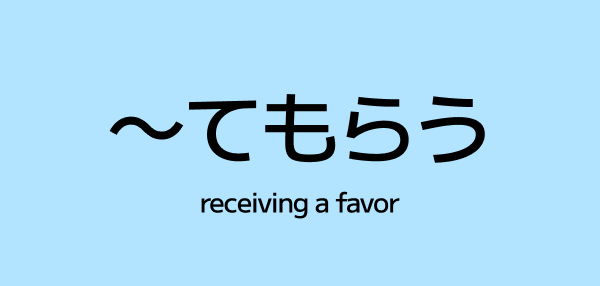~が一番 (ga ichiban) – The Best / The Most in Japanese

Want to declare that ramen is the best food? Or that summer is the hottest season? When you need to express superlatives — the biggest, the most delicious, the fastest — Japanese uses 〜が一番(~がいちばん).
This pattern is simple, versatile, and appears constantly in everyday conversation. Whether you're talking about favorites, rankings, or extremes, いちばん is your go-to word. Let's see how it works!
What Does ~がいちばん Mean?
~がいちばん means "the most [adjective]" or "the best" — it expresses the superlative form.
Breaking it down:
- が = subject marker particle
- いちばん (一番) = number one, the most, the best
Literally, いちばん means "number one," so you're saying something is "#1" in a certain quality.
This pattern is used when:
- Comparing three or more things
- Expressing your absolute favorite
- Stating what's the most extreme in a category
How to Use ~がいちばん
The basic structure is:
[Subject] がいちばん + [Adjective] → [Subject] is the most [adjective]
For "among" or "out of" comparisons, add:
[Group] の中で / で + [Subject] がいちばん + [Adjective] → Among [group], [subject] is the most [adjective]
Here are some examples of how がいちばん works with different sentence patterns:
Simple statements:
- これがいちばんおいしいです。 → This is the most delicious.
- 夏がいちばん好きです。 → I like summer the most.
With location/group context:
- このクラスの中で田中さんがいちばん背が高いです。 → Among this class, Tanaka is the tallest.
- 日本で富士山がいちばん高いです。 → Mt. Fuji is the tallest in Japan.
With time periods:
- 今年の夏がいちばん暑かったです。 → This summer was the hottest this year.
Example Sentences
🍜 ラーメンがいちばん好きです。 I like ramen the most. / Ramen is my favorite.
🗾 日本で東京がいちばん大きいです。 Tokyo is the biggest (city) in Japan.
☀️ 夏がいちばん暑いです。 Summer is the hottest.
📚 この本がいちばんおもしろいです。 This book is the most interesting.
🏃 クラスの中で山田くんがいちばん速いです。 Among the class, Yamada is the fastest.
❄️ 12月 がいちばん寒いです。 December is the coldest.
🎬 今まで見た映画の中で、これがいちばん感動しました。 Of all the movies I've seen, this one moved me the most.
Asking "What is the Most?" Questions
To ask superlative questions, use question words + がいちばん:
- 何(なに/なん)がいちばん [adjective] ですか? → What is the most [adjective]?
- どこがいちばん [adjective] ですか? → Where is the most [adjective]?
- 誰 (だれ)がいちばん [adjective] ですか? → Who is the most [adjective]?
- いつがいちばん [adjective] ですか? → When is the most [adjective]?
Example conversations:
👤 何がいちばん好きですか?
What do you like the most?
👤 寿司がいちばん好きです。
I like sushi the most.
👤 日本でどこがいちばんきれいですか?
Where is the most beautiful in Japan?
👤 京都がいちばんきれいだと思います。
I think Kyoto is the most beautiful.
👤 季節の中で、いつがいちばん好きですか?
Among the seasons, which do you like the most?
👤 秋がいちばん好きです。
I like autumn the most.
👤 クラスで誰がいちばん背が高いですか?
Who is the tallest in the class?
👤 佐藤さんがいちばん背が高いです。
Sato is the tallest.
Using いちばん with Verbs
You can also use いちばん with verbs to express what you do the most:
[Subject] がいちばん + [Verb]
Examples:
- 🎮 週末にゲームをいちばんします。 I play games the most on weekends.
- 📺 夜にいちばんテレビを見ます。 I watch TV the most at night.
- 🍕 ピザをいちばんよく食べます。 I eat pizza the most often. (よく = often, frequently)
Note: When using verbs, adding よく (often) is very common to make it sound more natural: いちばんよく [verb].
Expressing Rankings with いちばん, 2ばんめ, 3ばんめ...
Japanese has a clear system for expressing rankings:
- いちばん (一番) = #1, the most, first place
- にばんめ (二番目) = #2, second place
- さんばんめ (三番目) = #3, third place
And so on: よんばんめ (4th), ごばんめ (5th)...
Examples:
- 🥇 ラーメンがいちばん好きです。 I like ramen the most. (#1)
- 🥈 カレーがにばんめに好きです。 Curry is my second favorite.
- 🥉 パスタがさんばんめに好きです。 Pasta is my third favorite.
This is especially useful when someone asks about your top favorites or preferences!
Cultural Note: いちばん in Daily Life
In Japanese culture, discussing favorites and superlatives is a common conversation topic. You'll often hear:
好きな [category] は何ですか? → What's your favorite [category]?
And the natural response uses がいちばん:
- 👤 好きな食べ物は何ですか? What's your favorite food?
- 👤 寿司がいちばん好きです。 I like sushi the most.
いちばん also appears in many set phrases:
- いちばん大切 (ichiban taisetsu) = the most important
- いちばん上 (ichiban ue) = the very top
- いちばん下 (ichiban shita) = the very bottom
You'll see いちばん everywhere from restaurant menus (一番人気 = #1 most popular) to train station signs (一番 線 = platform #1).
いちばん vs. もっとも
There's another word for "most" in Japanese: もっとも (最も).
The difference:
いちばん:
- Conversational and everyday
- Used in spoken Japanese
- Friendly and accessible
もっとも:
- Formal and literary
- Used in written Japanese, news, academic texts
- Sounds more sophisticated
Examples:
- Casual: 夏がいちばん暑いです。
- Formal: 夏がもっとも暑いです。
Both mean "Summer is the hottest," but もっとも sounds more formal.
For everyday conversation, stick with いちばん!
Try It Yourself!
How would you say these in Japanese using ~がいちばん?
- "Spring is the most beautiful season."
- "What is the most delicious?" (What do you think is the most delicious?)
- "Mt. Fuji is the highest mountain in Japan."
✅ Answers:
- 春がいちばんきれいな季節です。
- 何がいちばんおいしいですか?
- 富士山は日本でいちばん高い山です。
Key Takeaways
- ~がいちばん = "the most [adjective]" or "the best"
- Literally means "number one"
- Structure: [Subject] がいちばん + [Adjective]
- Use の中で or で to specify "among" or "in" a group
- Question pattern: 何/誰/どこ/いつがいちばん [adjective] ですか?
- Can be used with verbs: いちばんよく [verb] = do [verb] the most often
- Rankings: いちばん (#1), にばんめ (#2), さんばんめ (#3)
- Casual alternative to formal もっとも
Talking about favorites and superlatives is a fun way to connect with others — and がいちばん makes it simple and natural! 🏆
Related Grammar
Build Your Japanese Foundation
Keep your momentum going with bite-sized guides for the core writing systems.
Learn Hiragana(ひらがな)
Master the basic script for native Japanese words, particles, and verb endings so grammar patterns click faster.
Go to Hiragana Guide →Learn Katakana(カタカナ)
Get comfortable reading foreign words, brand names, and emphasis so you can recognize more vocabulary everywhere.
Go to Katakana Guide →Save Grammar & Vocabulary with Bento Japanese
Create a free account to get weekly reads, save vocabulary to your Collections, and track your progress.




